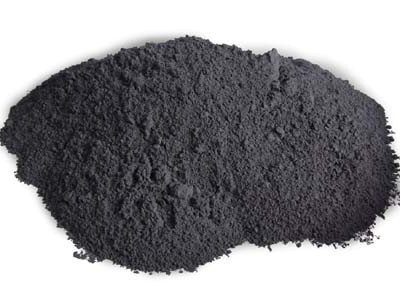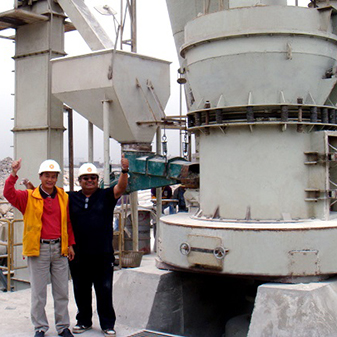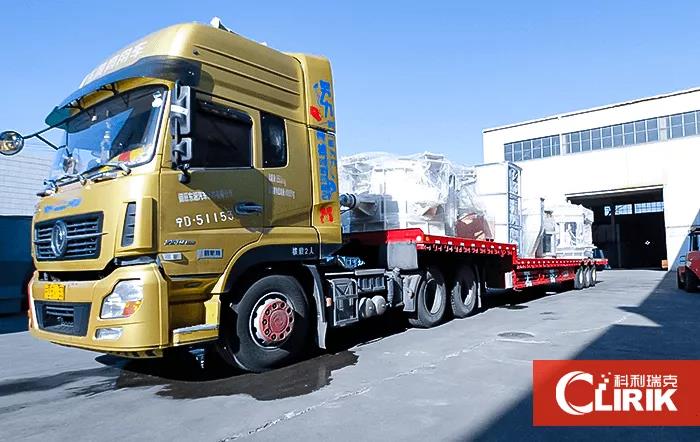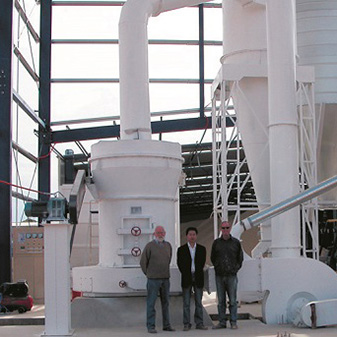Graphite powder has a soft texture and a dark gray color. Its melting point is above 3000 ℃ under the condition of oxygen isolation. It is one of the high temperature resistant minerals. Graphite powder is stable at room temperature, insoluble in water, dilute acid, dilute alkali; when oxygen is sufficient, it reacts with oxygen to form carbon dioxide, when oxygen is insufficient, it reacts with oxygen to form carbon monoxide; fluorine can directly react with elemental carbon; it can be reduced at high temperatures Many metal oxides can be reduced by nature, and metals can be smelted, such as iron smelting.

The distribution of global graphite resources is both extensive and relatively concentrated, mainly in countries such as Brazil, China, India and Mexico. Graphite powder is widely used, and graphite powder can usually be obtained by ore powder grinding mill. Generally, Raymond mill is used to process graphite powder below 500 mesh, and ultra fine grinding mill is used to process 325-3000 mesh graphite powder.
Graphite and diamonds, diamonds, and carbon 60, which symbolize love, are all simple substances of carbon and are allotropes.
The main types of graphite powder:
1. Flake graphite powder is a crystalline mineral of carbonaceous elements, which resembles fish scales with a hexagonal layered structure. The distance between each mesh layer is 340pm, and the distance between carbon atoms in the same mesh layer is 142pm. It belongs to the hexagonal crystal system with complete layered cleavage. It has good high temperature resistance, electrical conductivity, thermal conductivity, lubrication, plasticity, acid and alkali resistance.
2. Nano graphite powder is a product obtained by graphite powder particles passing through the graphite powder of a nano-scale sieve, and the particle size of the nano-graphite powder has reached the nano-scale. Particle size index: D100<1000nm, D50<400nm, carbon content greater than 99.99%. Nano-graphite powder is an ideal solid lubricating material. It forms chemically bonded, tough, almost non-wearable nano-graphite on the metal surface. A large amount of nano-graphite is suspended in the lubricating oil to reduce drag and friction and seal and self-lubricate. It is widely used in the chemical industry, steel lubrication, aerospace, lubricants and other fields.
3. Earthy graphite powder is also called microcrystalline graphite. It has good quality, high fixed carbon content, less harmful impurities, extremely low sulfur and iron content, stable chemical properties, and is not affected by strong acids and alkalis. It enjoys a high level in the graphite market at home and abroad. The reputation of "Golden Sand" is known as.
4. In addition to the above types, graphite powder is also divided into high-purity graphite powder, casting graphite powder, colloidal graphite powder and so on.
What are the uses of graphite powder?
Graphite powder is closely related to our lives, and its main uses are as follows:
1. Refractory materials: Graphite and its products have the properties of high temperature resistance and high strength. It is mainly used in the metallurgical industry to make graphite crucibles. In steelmaking, graphite is commonly used as a protective agent for steel ingots and as a lining for metallurgical furnaces.
2. Conductive materials: used in the electrical industry to make electrodes, brushes, carbon rods, carbon tubes, graphite washers, telephone parts, and coatings for television picture tubes.
3. Lubricating material: Graphite is often used as a lubricant in the machinery industry. Lubricating oil often cannot be used under high-speed, high-temperature, and high-pressure conditions, while graphite lubricating materials can work without lubricating oil at a temperature of 2000°C.
4. High-temperature metallurgical materials: Graphite has reducibility, which can be used to reduce many metal oxides at high temperatures, and can smelt metals, such as iron smelting.
5. Polishing agent and anti-rust agent: Graphite is also a polishing agent and anti-rust agent for glass and paper in light industry. It is an indispensable raw material for the manufacture of pencils, ink, black paint, ink, synthetic diamonds and diamonds.
At present, with the globalization of economic development, the global graphite industry product research and development will be carried out in ten major areas:
1. High-performance seals and products. There are four key technologies in this product: insertion technology, expanded sulfur technology, composite reinforcement technology, and molding technology.
2. High-performance conductive materials, one is made into interlayer compound; the other is high-performance stability, and the third is process repairability.
3. Battery materials.
4. Environmental protection materials.
5. Biological materials.
6. Sound insulation and heat insulation materials.
7. Protective safety materials.
8. Shielding material.
9. Arts and crafts materials.
10. Catalyst.
How to get graphite powder?
Graphite powder production line
The raw material of graphite powder is graphite ore. Ultra-fine graphite powder is produced by a complete set of grinding production lines. First, the graphite stones are coarsely broken with a crusher, and then ground by an ultra fine grinding mill (currently ultra-fine vertical mills are often used), and the fineness is qualified. The heat of the fine powder sent by the fan is sent by the classifier to the powder collector through the pipe to be packaged.
Graphite powder grinding mill
Graphite powder is obtained by grinding graphite ore. According to the different requirements of graphite powder fineness, different grinding equipment can be selected. Only the appropriate grinding machine selected according to the actual production situation is the most cost-effective. For graphite powder below 500 mesh, you can choose YGM Raymond mill to grind. Compared with the traditional Raymond mill, the upgraded version of the YGM Raymond mill (independently developed by CLIEIK) has a 30% increase in output, reduced energy consumption and longer parts life. For ultra-fine graphite powder, you can choose a HGM micro powder grinding mill or CLUM ultra-fine vertical mill, both of which can produce 325-3000 mesh ultra-fine graphite powder. The micro-powder grinding mill has a small footprint, simple operation and convenient maintenance. Ultra-fine vertical mill, suitable for large-volume production, high efficiency, low energy consumption, and powerful drying function.
Of course, the above ore powder grinding mills can grind other ores with Mohs hardness less than 7 in addition to graphite powder. If you have a need for ore grinding, you can contact us WhatsApp: +8613917147829, our technicians will follow Your production needs, to provide you with the best solution for free!



